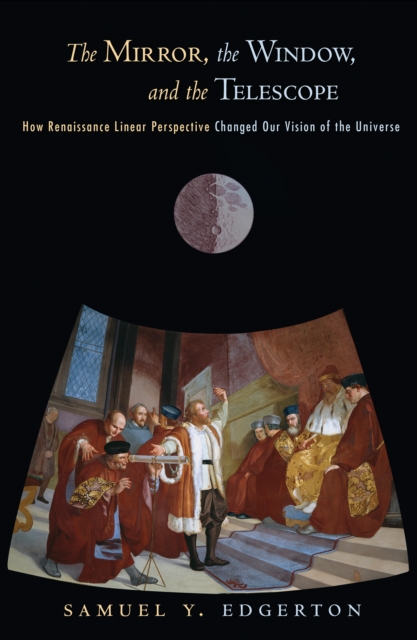The Mirror, the Window, and the Telescope: How Renaissance Linear Perspective Changed Our Vision of the Universe

The Mirror, the Window, and the Telescope: How Renaissance Linear Perspective Changed Our Vision of the Universe
In The Mirror, the Window, and the Telescope, Samuel Y. Edgerton brings fresh insight to a subject of perennial interest to the history of art and science in the West: the birth of linear perspective. Edgerton retells the fascinating story of how perspective emerged in early fifteenth-century Florence, growing out of an artistic and religious context in which devout Christians longed for divine presence in their daily lives. And yet, ironically, its discovery would have a profound effect not only on the history of art but on the history of science and technology, ultimately undermining the very medieval Christian cosmic view that gave rise to it in the first place. Among Edgerton's cast of characters is Filippo Brunelleschi, who first demonstrated how a familiar object could be painted in a picture exactly as it appeared in a mirror reflection. Brunelleschi communicated the principles of this new perspective to his artist friends Donatello, Masaccio, Masolino, and Fra Angelico. But it was the humanist scholar Leon Battista Alberti who codified Brunelleschi's perspective rules into a simple formula that even mathematically disadvantaged artists could understand.By looking through a window the geometric beauties of this world were revealed without the theological implications of a mirror reflection. Alberti's treatise, "On Painting," spread the new concept throughout Italy and transalpine Europe, even influencing later scientists including Galileo Galilei. In fact, it was Galileo's telescope, called at the time a "perspective tube," that revealed the earth to be not a mirror reflection of the heavens, as Brunelleschi had advocated, but just the other way around. Building on the knowledge he has accumulated over his distinguished career, Edgerton has written the definitive, up-to-date work on linear perspective, showing how this simple artistic tool did indeed change our present vision of the universe.
PRP: 148.49 Lei
Acesta este Prețul Recomandat de Producător. Prețul de vânzare al produsului este afișat mai jos.
133.64Lei
133.64Lei
148.49 LeiLivrare in 2-4 saptamani
Descrierea produsului
In The Mirror, the Window, and the Telescope, Samuel Y. Edgerton brings fresh insight to a subject of perennial interest to the history of art and science in the West: the birth of linear perspective. Edgerton retells the fascinating story of how perspective emerged in early fifteenth-century Florence, growing out of an artistic and religious context in which devout Christians longed for divine presence in their daily lives. And yet, ironically, its discovery would have a profound effect not only on the history of art but on the history of science and technology, ultimately undermining the very medieval Christian cosmic view that gave rise to it in the first place. Among Edgerton's cast of characters is Filippo Brunelleschi, who first demonstrated how a familiar object could be painted in a picture exactly as it appeared in a mirror reflection. Brunelleschi communicated the principles of this new perspective to his artist friends Donatello, Masaccio, Masolino, and Fra Angelico. But it was the humanist scholar Leon Battista Alberti who codified Brunelleschi's perspective rules into a simple formula that even mathematically disadvantaged artists could understand.By looking through a window the geometric beauties of this world were revealed without the theological implications of a mirror reflection. Alberti's treatise, "On Painting," spread the new concept throughout Italy and transalpine Europe, even influencing later scientists including Galileo Galilei. In fact, it was Galileo's telescope, called at the time a "perspective tube," that revealed the earth to be not a mirror reflection of the heavens, as Brunelleschi had advocated, but just the other way around. Building on the knowledge he has accumulated over his distinguished career, Edgerton has written the definitive, up-to-date work on linear perspective, showing how this simple artistic tool did indeed change our present vision of the universe.
Detaliile produsului










